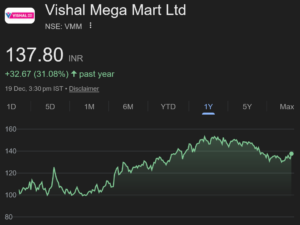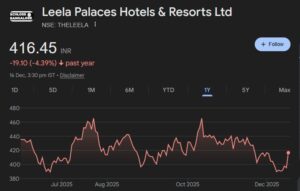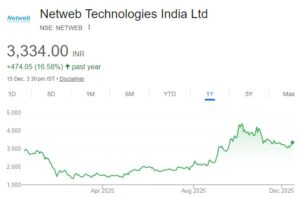
Prof Sanjay Bakshi, the authority on value investing, is one of the few people who have successfully straddled the worlds of investment-theory and investment-practice.
However, the drawback of the Prof’s stature as an academic don is that while you can query him for hours about esoteric issues, you dare not ask him a stock specific query.
Fortunately, the Prof has the salutary habit of illustrating academic theory with practical examples of real-life stocks. So, if you can sit through the academic discussion, it is possible to glean valuable information about the Prof’s favourite stocks.
The Prof’s latest lecture is a case in point. Titled “The Multiplication Rule”, the lecture explains the importance of “multiplication” with respect to investments.
The bottom-line of the lecture appears to be that investors must choose companies which are “simple” and with fewer “moving parts”. The logic is that the simpler the business is, the lesser are the chances of something, somewhere, going wrong.
The Prof says:
“The way I see it is that some business models, by their very nature are so complex (e.g. drug discovery) that one has to worry about lots of “moving parts” — independent risk factors. For the investment to be successful, all of those risks must be mitigated. And given the way the multiplication rule works, that’s a long shot. To be sure, long-shots can sometimes be offset by bonanza profits if success does occur, but that kind of investing is more in the nature of a venture capital operation than a value investing operation.
In contrast, other things remaining unchanged, simple, easy to understand businesses with fewer moving parts carry much lower risk of disappointment.”
As an illustration of a “simple” business which checks all the boxes, the Prof refers to Relaxo Footwears in the following words:
“Contrast the complexity involved in predicting the future price of oil or other commodities with the simplicity of investing in a business like Relaxo – India’s largest footwear manufacturer which despite volatility in input prices, does not experience volatility in its profit margins.
Why?
Because Relaxo follows the simple notion of buying commodities and selling brands. It has the ability to pass through cost inflation to customers without fear of loss of unit volume or market share. The business that manufactures EVA has lot more “moving parts” than the business that uses EVA to make and sell branded footwear.”
It is significant to note that Relaxo Footwears was the subject of a case study by the Prof in September 2013. In that, the Prof formulated the unique theory that the wafer-thin margins on which Relaxo operates (which lay investors view with disfavour) was actually a powerful “moat” because it discourages competitors from barging in. The Prof made several other important points on why Relaxo, with its strong brand image, distribution network, quality management, etc could be the next “Havaianas”, the Brazilian powerhouse footwear company.
Well, the proof of the pudding is in the eating. Today, barely 24 months since the Prof’s lecture, Relaxo Footwears has given a mind-boggling gain of 550%.
In the original lecture itself, the Prof asked the rhetorical question as to how big Relaxo could get. He answered the question with aplomb:
“How big can Relaxo become? That’s a speculative question. It would be overoptimistic to take recent high growth rates and project them into eternity but I believe that the company’s ability to sell 250 million pairs of footwear a decade from now (at higher realisations and higher margins) is well within its reach.”
So, if you put two and two together, it is quite clear that the Prof regards Relaxo Footwears as still being worthy of a buy.
At this stage, we must note that Sharekhan has recommended a buy of Relaxo Footwears on the following logic:
“Relaxo’s strong presence in the lucrative mid-priced footwear segment (through its top-of-the-mind recall brands like Hawaii, Flite and Sparx) along with its integrated manufacturing setup, lean working capital requirement and vigilant management puts it in a sweet spot to cash in on the strong growth opportunity unfolding in the footwear category due to a shift from unbranded to branded products. Thus, we remain positive on the stock at an unchanged price target of Rs635 and maintain our Buy rating.”
Sharekhan’s target price of Rs. 635 implies an upside of about 30% from the CMP of Rs. 489. However, if you go by the Prof’s logic of comparing Relaxo to Havaianas, we could be talking of another 5-bagger in the next few years!






75% promoter and 15% vls finance (Trapped at the time of IPO in 1995 being a manager to the issue and took the entire unsubscribed portion but the wise thing is still it is holding the stock)and only 10% (that means 1.20 cr. shares) is the free float. Lot of HNI are playing in the market. So if any body pump 200 to 300 Cr in this stock ,can take up this stock not 5 times even 25 to 50 times can jump with in a matter of 24 to 36 months. (most of the micro and mid stocks operation are doing like that only in India)
Relaxo in FY12 made profit 40 Cr. that time the company is valued at 365 Cr and now based on the latest first half performance, can expect in FY16 they end up 120 Cr. net profit that is 200% rise in 4 years time frame, whereas, now the company is valued at 5900 cr. that means it is up my 1600 % during this four years time frame. So the sum is, the value is fixed based on the buyers perception and not the business performance . The market reality is, perceptions are changeable from time to time.
We see that prof Bakshi has been using the Relaxo example everywhere time and again.
Can he pleas talk about any other company which he evaluates will make a similar fortune for nvestors. Or there is none to talk about? Or anyone’s guess?
If u can’t convince them confuse them
PLS tell the new small cap stock of less price which can be purchased at a low cast and gaining of profits in coming years
buy relaxo footwear mam